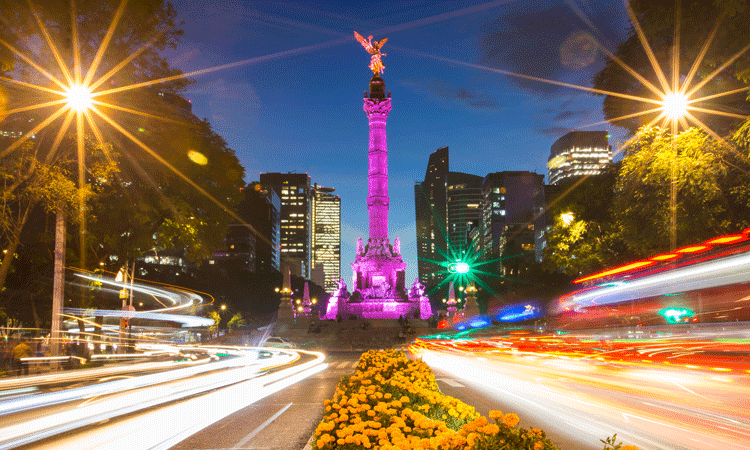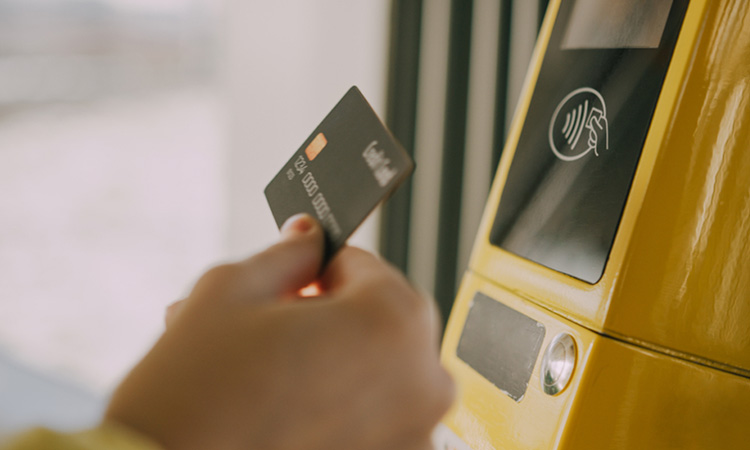How to avoid denial of service and truly deliver MaaS for all
- Like
- Digg
- Del
- Tumblr
- VKontakte
- Buffer
- Love This
- Odnoklassniki
- Meneame
- Blogger
- Amazon
- Yahoo Mail
- Gmail
- AOL
- Newsvine
- HackerNews
- Evernote
- MySpace
- Mail.ru
- Viadeo
- Line
- Comments
- Yummly
- SMS
- Viber
- Telegram
- Subscribe
- Skype
- Facebook Messenger
- Kakao
- LiveJournal
- Yammer
- Edgar
- Fintel
- Mix
- Instapaper
- Copy Link
Posted: 5 September 2023 | Philippe Vappereau - Calypso Networks Association | No comments yet
For the third instalment in an online-exclusive series published in partnership with Calypso Networks Association (CNA), Philippe Vappereau, General Manager at CNA, explores how ticketing options for Mobility-as-a-Service need to integrate fully with existing public transport offers or they risk derailing growth by excluding passengers.


MaaS can accelerate the move away from private vehicles (i.e., cars) to a seamless, combined offering and a true end-to-end, environmentally friendly service”
Transport ticketing is more than just a payment – it is a validation of a passenger’s right to ride. If you prevent individuals from purchasing a ticket, you deny them of their basic right to use public transport. Many transport networks and Mobility‑as-a-Service (MaaS) providers worldwide risk this scenario by overlooking choice in modern transport ticketing. As mobility options grow, ticketing options need to keep pace.
We cannot afford to miss the opportunities MaaS offers. By connecting passengers to integrated public transportation that facilitates mobility from the very first step of the journey to the last, using multiple modes of transport, MaaS can accelerate the move away from private vehicles (i.e., cars) to a seamless, combined offering and a true end‑to‑end, environmentally friendly service.
What do passengers and authorities want from MaaS?
The rise of home-working and less predictable commuter patterns have posed challenges for public transport operators and authorities. It has increased the need for fare flexibility as passengers demand structures designed for more intermittent travel behaviours. The same passengers want simplicity, clear choice and more integrated ticketing options.
Newer modes of transport, such as e-bikes and scooters, are increasingly being made available for use, making door-to-door public travel a real possibility for the first time. However, to become more widely adopted alongside existing public transport methods, they must be accessible to all – and that includes easy-to-use ways of purchasing the right to ride.
Is mobile the answer?
Even owning a smartphone does not guarantee an inclusive experience. Therefore, a ticketing solution that is solely dependent on these devices to deliver ticketing services instantly excludes some people from the network”
Many networks see mobile as the golden ticket for MaaS integration. It’s easy to see why: countless passengers already possess a mobile device that can be used to buy and store tickets for their journeys. And as focus continues to be placed upon the environmental impact of ticketing, any step to help dematerialise the ecosystem should be welcomed.
However, smartphone ownership varies around the world: in South Korea it is as high as 98%; while in the UK, France, Germany and the U.S. it is around 86%; and in Poland and Hungary it’s less than 80%. Clearly, no matter where you go, there is also always a proportion of the population that does not own a smartphone.
Even owning a smartphone does not guarantee an inclusive experience. In France, for example, around 80% of smartphones use Android OS and 20% use iOS, yet the proportion of smartphone owners using their device for travel information is split roughly in half. This suggests that a large proportion of Android users consistently do not use the full functionalities of their smartphone for travel, further limiting mobility access to certain demographics.
Therefore, a ticketing solution that is solely dependent on these devices to deliver ticketing services instantly excludes some people from the network. How can we avoid this scenario?


Credit: Calypso Networks Association
Enabling mobility inclusion for everyone
The challenge in integrating MaaS comes from the number of different providers now involved in passenger journeys. Customers want a joined‑up service that enables them to take whatever transport mode they want or need to reach their destination quickly and comfortably. They don’t want multiple different tickets for every step of their journey – that’s far too complex and does not deliver a good passenger experience.
As ticketing becomes more digitised, it is imperative that it does not come at the expense of passengers who do not have strong technical knowledge, or those that do not have bank accounts”
Passengers want a single ticket that they can use for their full journey. However, providers of mobility services are sometimes reluctant to collaborate or share data. They fear giving away valuable information without seeing the bigger picture – a joined-up public transport offer provides the only real, attractive alternative to expensive, high‑carbon options like private vehicles.
Mobility providers and public transport networks need to work together to provide an interlinked, seamless transport experience, which must cater for everyone. As ticketing becomes more digitised, it is imperative that it does not come at the expense of passengers who do not have strong technical knowledge, or those that do not have bank accounts (‘the unbanked’).
As mobility services grow, networks that do not enable access for every demographic risk deterring passengers, not only losing funds but also denying people the basic right to travel to work, see friends and family and more. The challenge for public transport is how to offer this across multiple modes of travel, as part of a seamless, simple and secure passenger experience.
Mexico city is an excellent example of the role of ticketing in making public transport fully inclusive. Urban inequalities coupled with the gradual expansion of the network means that integrating unstructured transport with the offering of the city’s public transport authority is key to providing a quality service to inhabitants throughout the metropolitan area. On-board ticket validators that accept city transit cards are being deployed on all buses and minibuses. This investment in infrastructure is laying the groundwork for a MaaS approach that provides everyone with access to the whole range of public and private transport services, regardless of their social status or the digital equipment that they own.
Delivering MaaS for all
Integrating multiple transportation modes into one ticketing system presents a number of complex challenges around revenue sharing, tariffs and scalability. Systems must be well-designed for use on multiple modes of transport in multiple locations, with flexible ticketing free from vendor lock-in. This helps ensure that all parts of the service are able to operate at their optimum performance and evolve over time in an affordable manner.
In this world, ticketing media can act as an ‘identifier’ for passengers, so that they can be registered at each stage of their travel and the appropriate fare can be calculated and applied across all modes of transport”
Using technology that is familiar, user-friendly, widely adopted and proven, is imperative to making sure that the system is accessible for all. Different regions and passenger demographics have different preferences for payments, and integrating all these into a unified MaaS network can only be achieved through collaborative open standards.
Ticketing systems in the MaaS age must support different types of fare media and should not exclude people based on their accessibility to technology or bank accounts. This means accepting traditional payment methods, such as cash and card, as well as innovative use cases, including wearables and smartphones. Building a platform that can integrate current and new payment methods is crucial.
Defragmenting the ticketing experience with a reliable alternative based on open standards (thereby freeing networks from proprietary vendor control and the associated expense that comes with it) will help MaaS options integrate successfully with existing public transport systems. In this world, ticketing media can act as an ‘identifier’ for passengers, so that they can be registered at each stage of their travel and the appropriate fare can be calculated and applied across all modes of transport.


Open standards for open access
The mark of a successful MaaS ticketing system is that it is intuitive, efficient and ergonomic. It must seamlessly blend public and private mobility offerings, creating a unified, complementary network; otherwise MaaS will only ever remain a marginal offer that is utilised by few users.
Transport ticketing is not a typical consumer purchase. It is not a ‘product’ in the traditional sense, but rather a contract between operator and passenger”
Public transport plays a central role in unifying and providing the necessary critical mass. Therefore, when designing such a system it’s fundamental to remember that transport ticketing is not a typical consumer purchase. It is not a ‘product’ in the traditional sense, but rather a contract between operator and passenger, giving them the right to travel.
MaaS ticketing must benefit from the transaction speed and security requirements of public transport. Failure to do so means that the system would not be usable. While some may argue that such considerations might make MaaS solutions more complex, it is this complexity that facilitates the interoperability of mobility services and thus, is integral to the success of MaaS. Furthermore, it supports a higher level of ergonomic efficiencies for MaaS users, and thanks to open standards and open-source tools, these solutions are accessible to all MaaS providers at a competitive cost.
The key to unlocking the full potential of MaaS is collaboration. Many solutions have been developed with limited budgets, while focused on the singular local requirements or one mode of transport. Such solutions cannot be extrapolated at scale to form a MaaS network. Operators need to be willing to securely share data to enable joined-up ticketing approaches across a multimodal mobility offering that meets the needs of all users.
This is why open standards that are accessible to all – including public and private operators – are crucial to the success of MaaS. Standards that are developed and maintained for the ticketing community by the ticketing community – with the specific goal of facilitating interoperability and data exchange between networks – will allow all potential passengers to buy a ticket using the means available to them. This ensures that all stakeholders can work together, using open-source technologies to implement open standards and create interoperable ticketing systems that guarantee simplicity and control. In doing so, they can create networks that meet the unique needs of the local population that they serve, enabling everyone to exercise their right to ride.


Related topics
Accessibility, Journey Planning, Mobility Services, Passenger Accessibility, Passenger Experience, Public Transport, Ticketing & Payments
Issue
Issue 2 2023
Related modes
Bikes & Scooters, Bus & Coach
Related cities
Mexico City
Related countries
France, Germany, Hungary, Mexico, Poland, South Korea, United Kingdom, United States
Related organisations
Calypso Networks Association (CNA)
Related people
Philippe Vappereau








